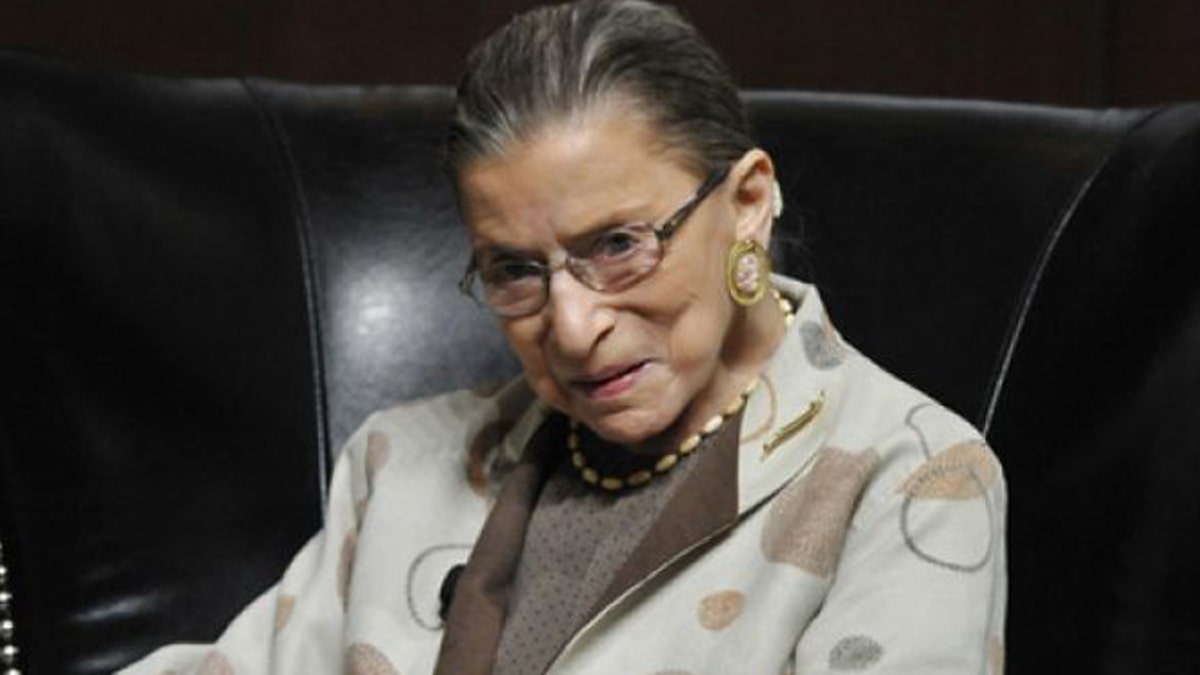
May 11, 2013: U.S. Supreme Court Justice Ruth Bader Ginsburg discusses the Roe vs. Wade case on it's 40th anniversary at The University of Chicago Law School in Chicago (AP)
The U.S. Supreme Court made a rare correction on Wednesday to an error in Justice Ruth Bader Ginsburg's scathing dissent of the majority opinion on Texas' controversial voter ID law -- a dissent that had been highly touted by critics of the law.
The dissent attracted widespread attention, in part because Ginsburg and fellow dissenting justices were up all night Friday, into Saturday morning, writing their statement skewering the law. They came down hard on the majority opinion by the Supreme Court to allow Texas to enforce the voter ID law in the upcoming November elections.
In her seven-page dissent, Ginsburg wrote that the law “may prevent more than 600,000 registered Texas voters from voting in person for lack of compliant identification.” Her dissent was widely covered in liberal-leaning media outlets, with one declaring it offered myriad reasons "why Texas' new voter ID law is racist."
But it turns out Ginsburg overstated her case in at least one regard.
Aside from “small stylistic changes,” Wednesday’s correction erases a sentence from Ginsburg’s official dissent that refers to photo identification cards issued by the U.S. Department of Veterans Affairs not being an acceptable form of ID in Texas -- when they actually are.
“Accordingly, the Justice deleted the following sentence from the dissent: ‘Nor will Texas accept photo ID cards issued by the U.S. Department of Veterans’ Affairs,’” the Supreme Court said Wednesday in a written statement.
As it currently stands, the Texas law allows seven types of approved ID documentation, including handgun licenses. The problem some groups had was that it did not include some types of identification -- like college IDs -- which are accepted in other states. Veterans Affairs ID's, though, are acceptable.
Over the weekend, the majority on the Supreme Court said no to an emergency request by the Justice Department and several civil-rights groups that Texas be barred from requiring voters to present certain kinds of identification cards before being allowed to cast their ballots.
Justices Elena Kagan and Sonia Sotomayor also dissented with Ginsburg, who wrote that a “sharply disproportionate percentage of those voters [who may be prevented from voting for ID reasons] are African-American or Hispanic.”
The dissent has no force of law, and so the correction is more a black eye than anything. While corrections made by U.S. Justices are uncommon, they do happen.
In April, Justice Antonin Scalia made a mistake in his dissent in a decision to uphold the Environmental Protection Agency’s authority to regulate coal pollution that blurred across state lines.
In the original dissent, Scalia argued that the majority’s decision was inconsistent with a unanimous 2001 ruling which he mistakenly said shot down EPA efforts to consider the costs of migrating pollution when setting regulation. It did not.
The Supreme Court issued a correction and the line was removed.
Trying to pinpoint who is to blame for the errors is difficult. Each U.S. Supreme Court justice is allowed to hire law clerks to review petitions, cases, research and to help draft opinions. Associate justices are allowed to have four clerks. The chief justice is allowed five.




